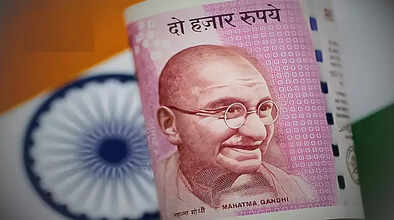Tagore or Mother Teresa's picture could have come on the notes, knowing how Gandhi became the first choice.

Indian Currency: Mahatma Gandhi's picture on the Indian currency is common today, but the names of great personalities like Rabindranath Tagore and Mother Teresa were also considered. The RBI documentary has revealed why Gandhiji was chosen to be printed on the notes.
Indian Currency: Mahatma Gandhi's picture on the Indian currency is common today, but do you know that before deciding on Gandhiji's image on the notes, the names of many eminent persons were seriously considered? The names of great personalities like Rabindranath Tagore, Mother Teresa, and Abul Kalam Azad were also discussed, but the consensus was in favor of Mahatma Gandhi.
This disclosure has been made in a special documentary 'RBI Unlocked: Beyond the Rupee' presented by the Reserve Bank of India (RBI), which was recently released on Jio Hotstar. In this five-part series, the functions, challenges and processes of currency distribution across the country of RBI have been explained in detail.
Notes are not just a means of transaction, they are also identity and symbol
The documentary states that bank notes are not just a means of payment but also a carrier of national identity, history, and the story of development. During the British rule, the influence of colonialism was visible on the notes. Portraits of kings, decorative elephants and symbolic depictions were examples of this.
🎬 Streaming Now!
— ReserveBankOfIndia (@RBI) June 3, 2025
💡 Go beyond the rupee and into the vaults of policy, innovation and resilience.
Presenting RBI Unlocked: Beyond the Rupee — a web series on the Reserve Bank of India.
🔗 https://t.co/gZw9s33758#RBI #RBIUnlocked #RBISeries #IndianEconomy #BeyondTheRupee pic.twitter.com/jaETW7OpHP
After independence, changes began to appear in Indian notes as well. Initially, images of Ashoka Pillar, national heritage sites, and natural elements such as tigers and deer were seen. As the country progressed in the field of science, agriculture and technology, topics like Aryabhatta, farmers, and green revolution started appearing on the notes.
Why did Gandhiji's picture become the choice? (Indian Currency)
According to RBI, over time it was realized that if the image of an eminent person is on the note, it not only increases cultural connection, but also helps in identifying the authenticity of the note. It also becomes a useful signal for identifying fake notes. In this context, the names of many great personalities were considered. But Mahatma Gandhi's widespread acceptance, idealism and his image as a symbol of national unity were considered most appropriate.
Since when did Gandhiji start appearing?
According to the RBI website, a commemorative note of ₹100 was issued for the first time in 1969 on Gandhiji's birth centenary, in which Gandhiji's picture was shown along with Sevagram Ashram.
In 1987, with the ₹500 note, his picture started being included in the notes regularly. After this, the 'Mahatma Gandhi Series' was started in 1996, in which notes were issued with new security features and design.
How does the rupee travel?
The documentary also tells that the RBI not only prints the currency, but also takes the responsibility of delivering it to every corner of the country. For this, all means like railways, airplanes, waterways and road transport are used.
Waterways in islands like Lakshadweep
Airways in Naxal-affected areas
Special transport systems in mountainous and desert areas
RBI clarified that whether it is the Himalayan region of the north, the desert of the west, or the law and order affected districts, it is the primary responsibility of the central bank to deliver currency safely and on time to every place.
Disclaimer: India Employment News does not give any suggestion for any purchase or sale related to the stock market. We publish market-related analysis quoting market experts and brokerage companies. But take market-related decisions only after consulting certified experts.

